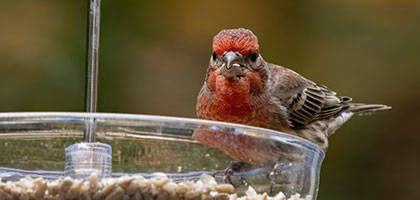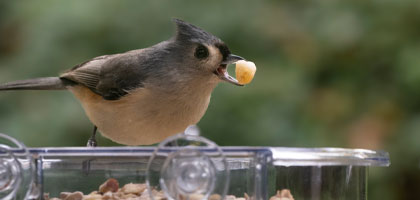If you're a bird enthusiast or a homeowner looking to attract wild birds to your garden, you've likely come across the term "fatballs." But what exactly are fatballs?
In essence, fatballs are a type of bird feed. They're typically composed of a mixture of suet or lard, seeds, grains, and sometimes even insects. These ingredients make fatballs a high-energy food source, especially crucial during the cold winter months.
But fatballs aren't just about nutrition. They also play a significant role in bird conservation and supporting local wildlife. Plus, they can attract a variety of bird species to your outdoor spaces, making birdwatching a more exciting activity.
In this comprehensive guide, we'll delve deeper into what fatballs are, their benefits, and how to properly use them. Whether you're a bird lover or a Bar Rescue fan intrigued by the term "fatballs," this article is for you.
Understanding Fatballs: A Definition
Fatballs are a specific type of wild bird food designed to provide high energy levels. Typically, they're crafted from a base of suet or lard, mixed with seeds, grains, and occasionally insects. This combination creates a nutrient-rich snack that appeals to many bird species.
These feeding balls are especially popular during colder seasons when food is scarce and birds need extra sustenance. Fatballs make it easy to supplement the diet of wild birds, helping them survive the harsh weather conditions. They're a convenient and effective way to support local wildlife in a garden or yard setting.
The Composition of Fatballs
Fatballs are made by combining various ingredients that cater to the dietary needs of wild birds. The core component is usually animal fat, such as suet or lard, which serves as a binder. This fat content is essential for providing energy, especially in colder months.
In addition to fat, fatballs include a mix of seeds and grains, which provide protein and nutrients. Some fatballs also contain dried insects, adding a further protein boost. This rich mixture offers a balanced diet that helps maintain bird health and vitality.
Here's a typical fatball composition:
- Suet or lard
- Seeds like sunflower seeds or millet
- Grains such as cracked corn or oats
- Optional: dried insects like mealworms
This combination ensures that fatballs are not only enticing to birds but also nutritionally sound, helping to attract a diverse array of species to your outdoor space.
The Importance of Fatballs in Wild Bird Nutrition
Fatballs are a crucial part of a bird's diet, especially during colder months when food is scarce. The high-fat content provides essential calories birds need to maintain their body temperature. This energy supply is vital for survival and helps birds remain active in wintry conditions.
Moreover, the nutrient-rich composition of seeds and grains in fatballs adds beneficial proteins and vitamins to bird diets. This balanced nutrition supports healthy feathers and strong immune systems, making fatballs a popular choice among bird enthusiasts for supporting local bird populations throughout the year.
How to Use Fatballs in Bird Feeders
Using fatballs in bird feeders can attract diverse bird species to your garden. To start, choose a feeder designed for fatballs. Wire cages work well, allowing birds easy access to the food.
It's important to hang the feeder in a safe, visible spot. This deters predators while offering birds a clear flight path. Regularly checking and refilling the feeder ensures birds consistently visit, enhancing your birdwatching experience and their nutritional intake.
Making Your Own Fatballs vs. Buying Them
When considering fatballs for bird feeding, you have the option to make them at home or buy commercially produced ones. Each option has its benefits and drawbacks. Understanding these can help you make an informed decision that suits your needs and values.
Homemade fatballs allow you to control the ingredients. This is a great advantage if you prefer using organic or local products. Many people enjoy the process of making fatballs, finding it a fun and rewarding activity. Here's a simple recipe you can try:
- Melt suet or lard gently.
- Mix in seeds, grains, and dried fruits.
- Shape the mixture into balls and allow to cool.
On the other hand, store-bought fatballs provide convenience. They are usually available in bulk, often at competitive prices. However, quality can vary. Look for those free from fillers or artificial additives. No matter the choice, both methods support wild bird nutrition, bringing joy to your garden.
The Role of Fatballs in Bird Conservation
Fatballs play a crucial role in bird conservation efforts. They provide essential nutrients to wild birds, especially in urban environments. In areas with limited natural food sources, fatballs can be vital in supporting bird populations.
Beyond basic sustenance, fatballs contribute to biodiversity. They attract different bird species to your garden, promoting ecological balance. By using fatballs, you help maintain healthy populations of birds, which are important for various ecosystems. This simple act of feeding can become part of a larger effort to conserve and protect local wildlife.
Fatballs and the "Fatballs" Bar Rescue Episode
The term "fatballs" gained unexpected popularity thanks to an episode of the TV show Bar Rescue. In this episode, a struggling bar named Fatballs was revamped, drawing attention to the name.
While the episode focused on the bar, it sparked curiosity about fatballs as a bird feeding concept. Many viewers wondered about the term's other meaning, leading to increased interest in bird feed fatballs. This cultural crossover introduced new audiences to the world of bird feeding and wildlife care. It highlights how media can impact everyday choices and hobbies like feeding wild birds.
Seasonal Use of Fatballs: When to Offer Them to Birds
Fatballs are especially beneficial for wild birds during the colder months. As temperatures drop, birds require more energy to stay warm and active. Fatballs provide essential fats and calories needed for survival.
During spring and summer, natural food sources become more available, reducing the dependency on fatballs. However, offering them year-round can support breeding birds and their fledglings. Make adjustments based on local weather and bird activity to ensure your feathered visitors receive adequate nutrition throughout the seasons. Monitoring seasonal changes helps optimize bird feeding practices.
Safety and Hygiene: Best Practices for Fatball Feeding
Handling fatballs with care is essential to maintain their quality and ensure bird health. Always wash your hands before and after placing fatballs in feeders. This reduces the risk of contaminating the bird food with bacteria or pathogens.
Regularly clean feeders to prevent mold and disease spread. Remove any uneaten or spoiled fatballs promptly to avoid attracting unwanted pests. Choose feeders that allow for easy removal and cleaning. Ensuring proper hygiene not only benefits the birds but also enhances the overall birdwatching experience by promoting a healthy environment.
Environmental and Ethical Considerations of Fatballs
Choosing environmentally friendly fatballs can make a significant difference. Opt for fatballs without plastic nets to minimize waste and prevent potential harm to birds and other wildlife. Biodegradable or no-net options are more sustainable and reduce pollution.
From an ethical standpoint, consider the ingredients in fatballs. Select those that use responsibly sourced materials. Some people prefer vegetarian or non-animal fatballs as an ethical alternative. By making thoughtful choices, you support bird welfare and contribute to a healthier planet. This also fosters a more compassionate approach to wildlife care and conservation.
Conclusion: The Bigger Picture of Using Fatballs
Fatballs offer valuable nutrition for birds and play a pivotal role in conservation. By using them thoughtfully, you foster biodiversity and encourage local wildlife. Their use brings joy to bird enthusiasts while supporting ecological balance. Embracing fatballs enhances your connection to nature and highlights the importance of sustainable practices.




